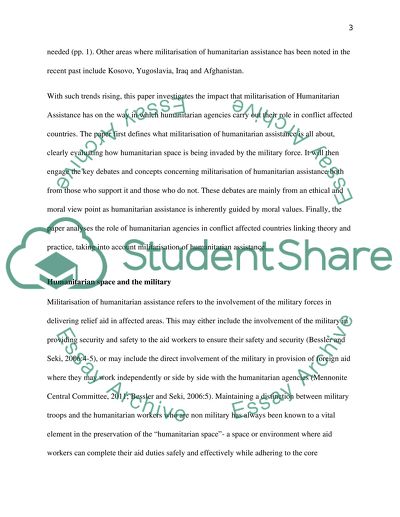Cite this document
(“Critically analyse the extent to which the militarisation of Essay”, n.d.)
Retrieved from https://studentshare.org/miscellaneous/1600345-critically-analyse-the-extent-to-which-the-militarisation-of-humanitarian-assistance-has-affected-the-way-in-which-humanitarian-agencies-carry-out-their-role-in-conflict-affected-countries
Retrieved from https://studentshare.org/miscellaneous/1600345-critically-analyse-the-extent-to-which-the-militarisation-of-humanitarian-assistance-has-affected-the-way-in-which-humanitarian-agencies-carry-out-their-role-in-conflict-affected-countries
(Critically Analyse the Extent to Which the Militarisation of Essay)
https://studentshare.org/miscellaneous/1600345-critically-analyse-the-extent-to-which-the-militarisation-of-humanitarian-assistance-has-affected-the-way-in-which-humanitarian-agencies-carry-out-their-role-in-conflict-affected-countries.
https://studentshare.org/miscellaneous/1600345-critically-analyse-the-extent-to-which-the-militarisation-of-humanitarian-assistance-has-affected-the-way-in-which-humanitarian-agencies-carry-out-their-role-in-conflict-affected-countries.
“Critically Analyse the Extent to Which the Militarisation of Essay”, n.d. https://studentshare.org/miscellaneous/1600345-critically-analyse-the-extent-to-which-the-militarisation-of-humanitarian-assistance-has-affected-the-way-in-which-humanitarian-agencies-carry-out-their-role-in-conflict-affected-countries.


